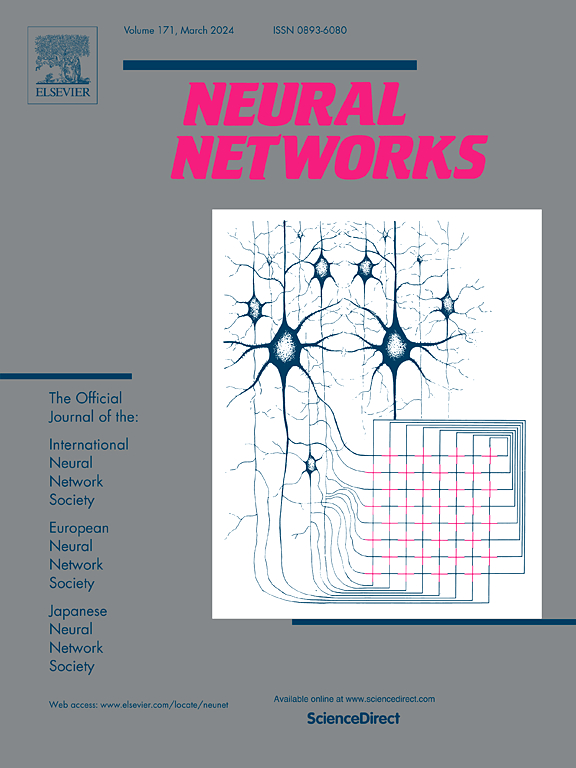Generative and contrastive graph representation learning with message passing
IF 6
1区 计算机科学
Q1 COMPUTER SCIENCE, ARTIFICIAL INTELLIGENCE
引用次数: 0
Abstract
Self-supervised graph representation learning (SSGRL) has emerged as a promising approach for graph embeddings because it does not rely on manual labels. SSGRL methods are generally divided into generative and contrastive approaches. Generative methods often suffer from poor graph quality, while contrastive methods, which compare augmented views, are more resistant to noise. However, the performance of contrastive methods depends heavily on well-designed data augmentation and high-quality negative samples. Pure generative or contrastive methods alone cannot balance both robustness and performance. To address these issues, we propose a self-supervised graph representation learning method that integrates generative and contrastive ideas, namely Contrastive Generative Message Passing Graph Learning (CGMP-GL). CGMP-GL incorporates the concept of contrast into the generative model and message aggregation module, enhancing the discriminability of node representations by aligning positive samples and separating negative samples. On one hand, CGMP-GL integrates multi-granularity topology and feature information through cross-view multi-level contrast while reconstructing masked node features. On the other hand, CGMP-GL optimizes node representations through self-supervised contrastive message passing, thereby enhancing model performance in various downstream tasks. Extensive experiments over multiple datasets and downstream tasks demonstrate the effectiveness and robustness of CGMP-GL.
求助全文
约1分钟内获得全文
求助全文
来源期刊

Neural Networks
工程技术-计算机:人工智能
CiteScore
13.90
自引率
7.70%
发文量
425
审稿时长
67 days
期刊介绍:
Neural Networks is a platform that aims to foster an international community of scholars and practitioners interested in neural networks, deep learning, and other approaches to artificial intelligence and machine learning. Our journal invites submissions covering various aspects of neural networks research, from computational neuroscience and cognitive modeling to mathematical analyses and engineering applications. By providing a forum for interdisciplinary discussions between biology and technology, we aim to encourage the development of biologically-inspired artificial intelligence.
 求助内容:
求助内容: 应助结果提醒方式:
应助结果提醒方式:


